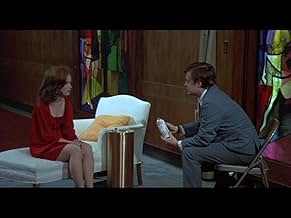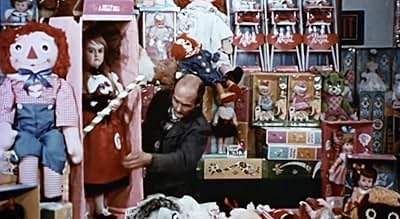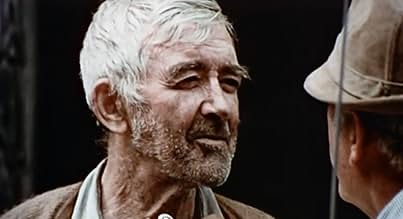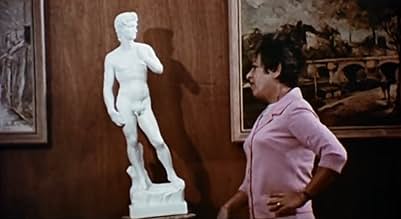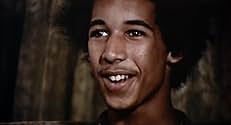IMDb RATING
5.8/10
588
YOUR RATING
From Candid Cameraman Allen Funt comes a hysterical feature films that tells and shows all. Witness America's response to one of the most titillating stunts of all time in this hilarious exp... Read allFrom Candid Cameraman Allen Funt comes a hysterical feature films that tells and shows all. Witness America's response to one of the most titillating stunts of all time in this hilarious expose of sex and society.From Candid Cameraman Allen Funt comes a hysterical feature films that tells and shows all. Witness America's response to one of the most titillating stunts of all time in this hilarious expose of sex and society.
Rudy Jones
- High School Student
- (uncredited)
Ernie Monah
- Falling Door Prank Victim
- (uncredited)
Harry W. Stinger
- Nudist
- (uncredited)
- Director
- Writer
- All cast & crew
- Production, box office & more at IMDbPro
Featured reviews
I love the first part where the elevator doors open and a lovely naked lady stands there to greet passengers. The candidly diverse reactions are amusing and at times surprising. The movie debuted in 1969, clearly maestro Funt's filmic response to the blooming sexual revolution of that unconventional decade. Mostly it's an entertaining collection of candid set-ups gauging people's responses to the new-found explicitness, both male and female. For example, there're women being suddenly situated with a nude male model, college kids being instructed by a nude female teacher, but mostly probing interviews with folks of all ages on changing sexual mores, some of which are over-extended, perhaps the docu's only drawback. At the same time, the setups with the elderly ladies may be the most entertaining and revealing of all. Then too, I'd love to see some of the out-takes that weren't included; I wonder what they would be.
Overall, there's not as much full frontal nudity as you might expect (strategically placed purses, etc.); nonetheless, it's a naughty and compelling Candid Camera of an unconventional era that's lost little interest over the intervening decades.
Overall, there's not as much full frontal nudity as you might expect (strategically placed purses, etc.); nonetheless, it's a naughty and compelling Candid Camera of an unconventional era that's lost little interest over the intervening decades.
I just watched the 1970 Candid Camera movie, What Do You Say to a Naked Lady, and there's a scene with a tailor who starts caressing women's asses while he fits them for pants and dresses. He really goes to town, he cups their butt cheeks and pats them repeatedly...nowadays, any five seconds of that five minute scene would have landed a bunch of people in prison for sexual assault! What do you think happened in 1970? Most of the women ignored it, a couple discreetly moved out of reach of the guy's grabby hands, and one young lady in a skintight pantsuit turned around and flat out asked the guy "Excuse me, are you French or something?" And then she presumably readjusted her pantsuit, signed the release, and ended up in the movie....things sure have changed ---
This movie remained a hysterical look at sex that i could not help but enjoy. The editors cut the footage perfectly in the "Spray can scene" and made me break out in laughter just watching the difference between the girls' orgasms. Different sequences with different sex related themes made this a documentary great. This docu-comedy is pure genius ***1/2 out of ****
How often does one remember only a few brief scenes from a film and find on re-viewing years later that it was only those few moments that are worth remembering? NAKED LADY, one might think, being a film of individual moments, could well be such a film. Happily, this is not the case. (Only the little kids on the lawn and the extended reprise of faces and "smile" moments at the end seemed at all tacky.) The passing years have only added to the film's value, for it turns out to be a revealing portrait of changing attitudes to sex in the late sixties, when people of all ages with open minds were receptive to new ways of thinking about sex. The film has an innocence and a hopefulness, a simple charm that we've all lost today for many reasons. It's Funt's film all the way, of course, and it's his masterpiece! His personality dominates the film; his voice constantly heard, challenging his subjects to say what they think and to think about what they say. The naked ladies in unusual places are there to sell the film, to provide entertainment value, but people are what endlessly fascinates Funt. He really likes people, and he loves to talk to them. The core scenes are all talking heads; the co-eds talking about guys on the dorm, the young people and their parents talking about sex, the woman who "prostitutes" for free because she likes it, his interview with a prospective model, even the "man in the street" comments about "how birds do it." It's no accident that the film is interracial, because Funt's belief is that you can't judge a person by their looks. Sometimes people are true to type, but just as often they're not. An IMDb viewer says that, based on his recollection, the current version differs from the original release. I wouldn't have remembered the changes he mentions, but my own recollection suggests an excision of a character in the greatest sequence in the film in which Funt, as a bus ticket clerk, feels people out on their feelings about an interracial couple. I recall clearly that there was a young, long-haired hippie type who was very outspoken against the couple, who was contrasted with the older man who says, "what's the difference, it's a big world," and prefers love to war profiteering. I did misremember that great line of the passing English bicycler at the beginning which I recalled as, "What you got there, Charlie?" when it's actually, "Charlie, how'd you get caught with that one?" But I can't see how I made up the young long-haired hippie; I'm certain he was there in the original release. The comments of the older man whose son married a Mexican girl, his difficulty in accepting the marriage so touchingly mixed with his pride in his grandchildren, again brought a lump to my throat. Moments like this must have been what Funt lived for. In his earlier days, going way back to "Candid Microphone" before TV, the emphasis was always on human interaction. (I remember, for example, a theatrical short where Funt, as a travel agent, insisted, with total courtesy and friendliness, on selling a customer a fancy vacation when they wanted something plain and simple.) The TV show had moved away from that to sight gags like cars splitting in half. This film was Funt's attempt to return to his roots. It's a very serious film by a very serious filmmaker, Funt challenging his audience to examine their own feelings and beliefs, and gently urging tolerance for the infinite variety of mankind. It's a far better, more enduring film, in fact, than some of the documentary "classics" (GREY GARDENS, for example) that were made in the same era.
This is one of those films where you come expecting titillation and end up getting educated. As mentioned in the other post, people are set up in situations where they unexpectedly encounter nudity-- elevators, classrooms, roadside, etcetera. Then Funt discovers an interesting thing, that when people ARE expecting nudity, in an art class or museum gallery, when the rules change people get flustered. In the art class, for example, the women who were calmly drawing the male nude seem unable to have a conversation with him when he talks to them.
There is an unexpected section of the film, one that Funt admits in the film even surprised him. It is a frank discussion with a call girl, Funt and the woman sitting by a hotel pool talking about prostitution. Funt was posing as a client; the woman is surprising and refreshing in her candor.
People may wonder why the film was rated X. At the time the Film Ratings board had a firm rule that if penises were shown, the film was given a X rating.
There is an unexpected section of the film, one that Funt admits in the film even surprised him. It is a frank discussion with a call girl, Funt and the woman sitting by a hotel pool talking about prostitution. Funt was posing as a client; the woman is surprising and refreshing in her candor.
People may wonder why the film was rated X. At the time the Film Ratings board had a firm rule that if penises were shown, the film was given a X rating.
Did you know
- Crazy credits"A Film by Allen Funt" is Funt's only on-screen credit.
- ConnectionsReferenced in Laugh-In: Guest Starring Debbie Reynolds (1970)
- How long is What Do You Say to a Naked Lady??Powered by Alexa
Details
- Release date
- Country of origin
- Language
- Also known as
- Que dice a una mujer desnuda?
- Filming locations
- Production company
- See more company credits at IMDbPro
Box office
- Gross US & Canada
- $157,900
- Runtime1 hour 25 minutes
- Color
- Sound mix
- Aspect ratio
- 1.85 : 1
Contribute to this page
Suggest an edit or add missing content

Top Gap
By what name was Que diriez-vous à une femme nue? (1970) officially released in Canada in English?
Answer

